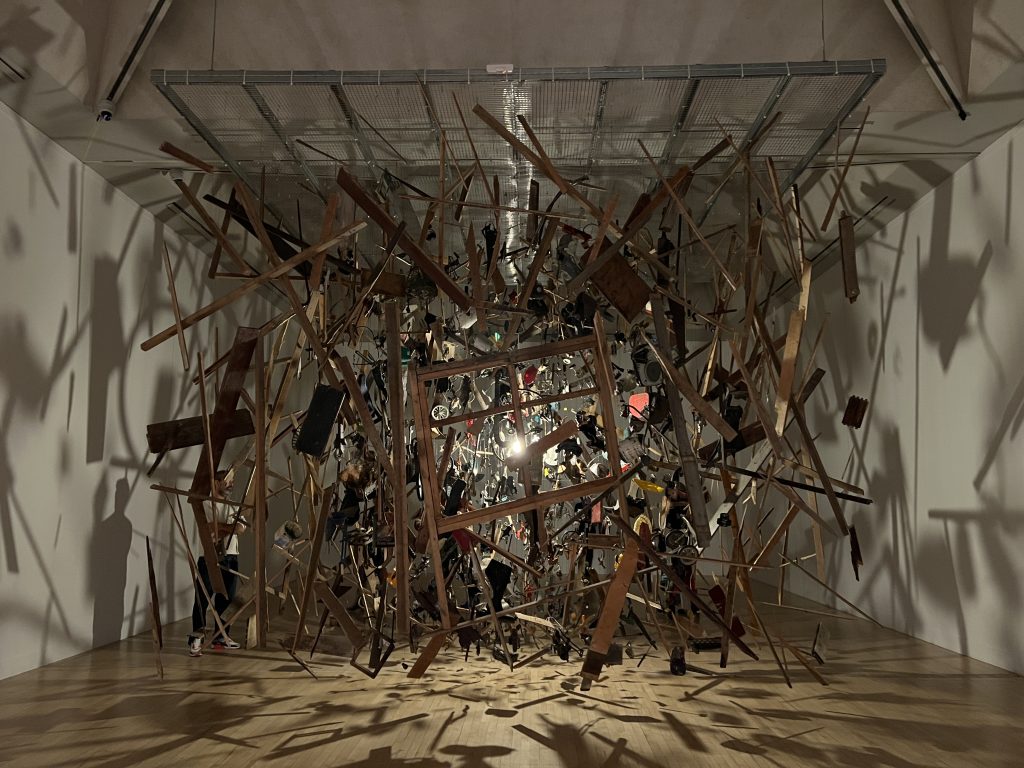When I visited her works, I noticed that many of her works reflect the stretching force in the destroyed objects through the interplay of light and shadow. In the still objects, I could feel some movement in the objects before they were destroyed through the transmission of light, and the slow movement of the shadows was more like a silent cry from the objects.
She had flattened and rearranged some of the silver objects and hung them above the floor, projecting them through the light from above. It felt as if each piece had been violently flattened, with the physical surface in tatters, but the projections on the floor intact, and some even combined to form interesting patterns. What intrigued me most was the way the actual warehouse after the explosion was framed in the moment of the blast, where all the objects seemed to be ejected but restrained by invisible forces, a still explosion made up of light and shadow. Some of the objects also moved slightly as I watched. Her text in the exhibition refers to this as giving new life to objects that are destined to fade away, or die. Although it is a very violent installation, I felt that they were like memories emanating and reuniting, a beautiful moment of reunification, where everything was frozen like a jigsaw puzzle, where the objects spoke as if they were alive, making sounds as they collided in the suspended air, as if they were telling me the story of what was happening in the scene.
Most of her installations contain some violence, she breaks some objects and then hangs them all with thread, but with the beauty of frozen time, which I think is connected to design, the objects are usually inanimate, but thanks to the creation of light and shadow in design, they give a new life to the objects. The atmosphere in which people and light and objects interact harmoniously throughout the space is what I am looking for in design.
